




































































































































































































Founded in 1952, the College of Fellows is composed of members of the Institute who are elevated to Fellowship by a jury of their peers. Fellowship is one of the highest honors the AIA can bestow upon a member. Elevation to Fellowship not only recognizes the achievement of the architect as an individual, but also elevates before the public and the profession those architects who have made significant contributions to architecture and to society.
Chancellor
Vice Chancellor Bursar
Secretary
Ron Blitch, FAIA
Kate Schwennsen, FAIA
Jeanne Jackson, FAIA
Steven Spurlock, FAIA
Editor-In-Chief
Associate Editor
Chair, Regional Representatives
Executive Director, College of Fellows
Jessica O'Donnell, AIA
Beresford Pratt, AIA
Stuart Pettitt, FAIA
Muza Conforti
COLLEGE OF FELLOWS NEWSLETTER ARCHIVE

COLLEGE OF FELLOWS COMPONENT OPPORTUNITY GRANT APPLICATION
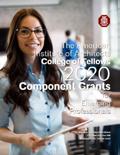
COLLEGE OF FELLOWS REGIONAL REPRESENTATIVE
WELCOME PACKET COLLEGE OF FELLOWS FORMER CHANCELLORS
DIRECTORY YAF CONNECTION ARCHIVE
By Ron Blitch, FAIA
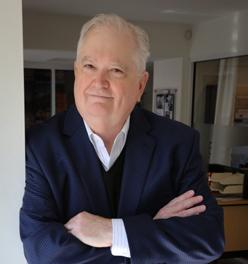
We welcome our new Fellows of the American Institute of Architects! Fellowship has been bestowed by the Institute since 1857, recognizing your achievements in practice, design, public service, academia and service to the Institute.
We thank you for what you have, and what you will, accomplish to advance our noble profession.
We also thank the AIA Fellows 2024 Jury that dedicated themselves to a rigorous and proven process that has been used for almost 70 years. The jury’s commitment and selfless efforts have resulted in this Class of 2024. You deservedly should all be very proud.
This is the beginning of the next chapter of your service to the profession, to advance the quality of living for all those who encounter the buildings and cities you design. Please take this opportunity as an invitation to mentorship of those thinking of architecture as a life’s work and passion, and those in the education and licensure track aspiring to Fellowship themselves. Consider supporting the College yearly to advance our efforts and consider the College in your financial planning.
The College of Fellows supports research, hosts and funds mentorship efforts with our allied organizations within the Institute and within the wider architectural community. The College is the forum to share wide interests among over three thousand living Fellows.
You have received this great honor through a rigorous and proven process. It wasn’t easy, and the path to Fellowship began at the first spark you had to consider architecture as a profession.
We are excited to celebrate with you in June at AIA24 – and hope you can participate in all the College’s activities.

2024 Chancellor
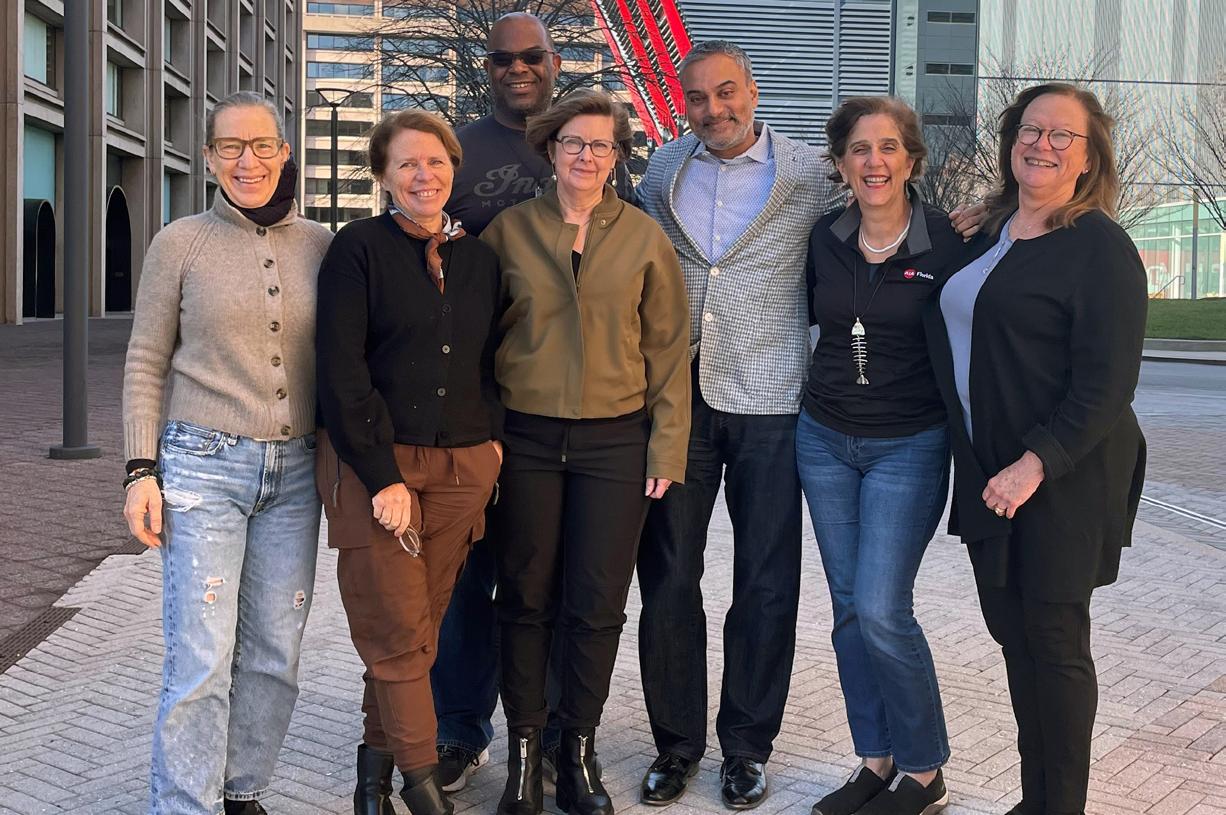
The College of Fellows Executive Committee extends a sincere Thank You to the 2024 Fellowship jurors and AIA staff for the significant time they spent during the deliberation process over the last four months.
The jury members represent a diverse mix of geographical and Fellowship Object mix. Each juror reviews 1/7 of the total submissions prior to the in-person jury deliberation and is responsible for presenting their assigned candidates to the whole jury. At the deliberation meeting, each juror reviews the summary section for each and every candidate. As a rule, no juror may review candidates from their own firm or state, or if they served together on a national board or committee.
Candidates are presented alphabetically and the presenting juror draws attention to the elements of the submission that do or do not support claims. The jury then discusses the merits of each candidate. During voting, one juror always sits out (juror from the candidate's state or firm, or the next presenter). A majority vote of eligible jurors is required for an individual to be elevated to Fellowship or Honorary Fellowship; a unanimous vote by the jury is not required. Any ties are set aside until the end of deliberation and then re-reviewed.
There are no quotas on the number of candidates elevated, number of candidates per category, or number of categories per AIA component or state.
• Lisa Lamkin, FAIA, Jury Chair
• Carl D'Silva, FAIA
• Sanford Garner, FAIA
• Margaret McFadden Carney, FAIANY
• Pamela Rew, FAIA
• Anne Schopf, FAIA
• Lourdes Solera, FAIA
• Sandra Barclay, Hon. FAIA, Jury Chair
• Andrew Fox Bromberg, Hon. FAIA
• Lisa Lamkin, FAIA
• Carl D'Silva, FAIA
• Sanford Garner, FAIA
• Margaret McFadden Carney, FAIA
• Pamela Rew, FAIA
• Anne Schopf, FAIA
• Lourdes Solera, FAIA

Lisa Lamkin, FAIA
Brown Reynolds Watford Architects, Inc., Dallas, TX Jury Chair - Fellows; Jury of Honorary Fellows
Over the past three decades Lisa has been involved in many leadership roles within the American Institute of Architects including founding chair of the Dallas AIA Women in Architecture Committee, 2014 Dallas AIA President, 2016 chair of the AIA National Project Delivery Knowledge Community, serving on the National 2019 Regions Task Force and co-chairing the Dallas Fellows Committee in 2020.
After elevation to fellowship in 2017 Lisa was a champion for “sending the elevator back down” to encourage and support future candidates for fellowship, serving as the 2020 Dallas chapter Fellowship committee chair. She served as a Regional Representative to the College of Fellows 2020-2023 and was appointed to the AIA Jury of Fellows in 2021.
As Principal of the K12 studio at BRW Architects, and through her various leadership roles in professional organizations, Lisa nurtures the development of others daily. Her passion for transforming education facilities and communities goes well beyond her projects; her contributions to the advancement and promotion of The Association for Learning Environments resulted in her elevation to A4LE LE Fellow in 2020.
Lisa’s practice exemplifies bringing community and architects together to create environments that have significant impact.
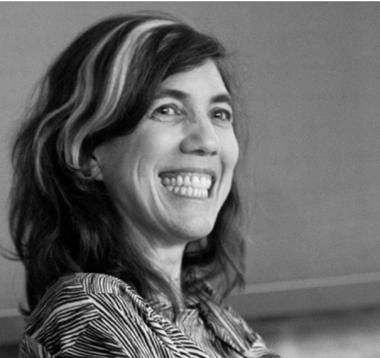
Sandra Barclay, Hon. FAIA
Barclay & Crousse, Lima, Peru - Paris, France Jury Chair, Honorary Fellows
Sandra Barclay was formed as an architect in Lima and Paris, and obtained a Master’s degree in Landscape and Territory at the UDP, Chile. She received the Doctor Honoris Causa degree from the University of Piura, Peru, 2018. Her academic experience includes a 16-year tenure as Associate Professor at the PUCP (2006-present), visiting professor at Yale School of Architecture (2019 and 2021), at University of Virginia (2020), and at Harvard GSD (2022).
Sandra has received the 2018 Woman in Architecture Award from the London-based Architects’ Journal and Architectural Review. She has been a member of the jury for the 17th International Architecture Exhibition of the Venice Biennale, 2021 and for the 6th International Lafarge Holcim Awards,2020. She was Jury Chair of the Cycle 4 MCHAP (2022-2023). She is an Honorary Fellow of the American Institute of Architects and a foreign member of the French Académie d’Architecture.
Sandra co-founded Barclay & Crousse Architecture in Paris, in 1994, established in Lima in 2006. The practice has been awarded the Mies Crown Hall Americas Prize 2018, the Oscar Niemeyer Prize 2016, the Peruvian National Prize of Architecture in 2014 and 2018, and the Latin America Prize 2013, given by the International Committee of Architectural Critics (CICA), among other international prizes.

Andrew Bromberg’s architecture is open and inclusive. Inspired by nature, his buildings weave in the urban fabric, extending the public realm. Through such gestures, Bromberg invites people to come together, explore, re-discover and enrich themselves.
As the Global Design Principal, Bromberg leads the design of major projects ranging from cultural and educational venues to large-scale mixed-use commercial developments, as well as significant transport and infrastructure schemes in Asia, the Middle East, Europe and North America. Bromberg’s projects have garnered over 140 accolades from prestigious international organizations and institutions. He has been widely published around the world, including four monographs on his vision and work. In recognition of his influence on the profession, Bromberg is frequently invited to give lectures and seminars on design at various universities, conferences and festivals - notably in Japan and Singapore, and Sibiu, Romania. Over the years, Bromberg has honed a refreshing and progressive approach to design, which is derived from his interest in nature, the public realm, environmental and human sustainability, as well as context specific to sites.
Andrew was recognized by the American Institute of Architects as an Honorary Fellow in 2023.

Carl D’Silva’s belief that world-class modern architecture is feasible only through intricate understanding and integration of the Design & Technical sides, has driven his growth as an architect throughout his career. His development of complex designs and systems in mega-projects, including Bangkok’s Suvarnabhumi Airport, O’Hare Airport FACE Expansion, Doha Convention Center & Tower, Sony Center in Berlin, the new Diablos Baseball Stadium in Mexico City, and The Reed at Southbank in Chicago, was instrumental in the successful delivery of these signature buildings.
After spending the first 24 years of his career at Murphy/Jahn, Carl transitioned to Perkins&Will in 2018, where he continues to work on large projects around the globe. In 2014, he was elevated to Fellow in the American Institute of Architects. In his spare time, Carl has also authored two books.
'Constructing Suvarnabhumi' is a photographic essay that captured geometric patterns during the construction phase of the New Bangkok International Airport. His newest book, 'Lost Danish Treasure,' published in 2024, tells the story of Finn Juhl’s iconic Chieftain Chair and a long-lost concept watercolor that preceded it.

Through his role as founding partner at RG Collaborative, Sanford Garner has focused on historic preservation, master planning, project assessment, and urban design. His experiences and interests in these areas were developed through his architectural studies at Howard University, in Washington DC, Helsinki, Finland, and at University of California, Los Angeles, and through his work with DC Preservation League and HABS/HAER (Historic American Building Survey/Historic American Engineering Survey).
His work has received such notable recognitions as “Best in American Living for Best Smart Growth Community” by the National Association of Home Builders and Professional Builders Magazine, “Awards for Excellence” from the Urban Land Institute, and the American Planning Association’s “Implementing Smart Growth” Award, as well as numerous awards and citations for community development and design. In addition to his professional practice, Sanford has maintained a strong commitment to community service and development through his involvement with local and regional advisory councils and boards.
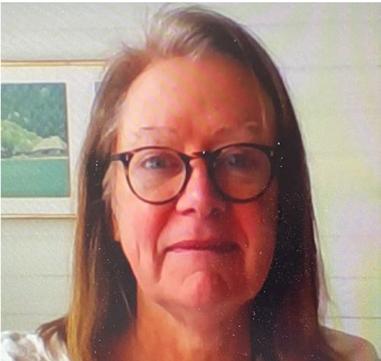
Margaret M. Carney, FAIA is the University Architect for Cornell University, her alma mater, where she leads she planning and design of Cornell’s built environment.
Prior to her return to Cornell in this role, Margaret served as Associate VP, University Architect and Planner for 14 years on three other campuses; The Catholic University of America in DC, Temple University in Philadelphia, and Case Western Reserve in Cleveland. She was the first University Architect and Planner for all three institutions, where she led the development and implementation of transformational campus master plans, guided the selection of design teams for significant projects and stewarded their design and integration within existing contexts. Her work and teaching over the last 25 years has focused on urban campuses and their impact on American Cities. Key projects include the Charles Library designed by Snohetta, Morgan Hall student tower in Philadelphia by MGA Partners, Verdant Temple, Landscape Master Plan by Ground Reconsidered, Cleveland’s Uptown District by Stanley Saitowitz, and Cornell’s Atkinson Hall, a multidisciplinary research facility by Lake Flato Architects.
Earlier in her career, Margaret worked with a number of leading Architects firms including TAC, SOM, Sasaki, and Ben Thompson Associates.

Pamela Rew, FAIA
KSS Architects, Princeton, NJ
In over three decades of practice Pamela Rew FAIA has been an idealistic architect, passionate about the responsibility of architecture to elevate individuals and society, to question, to energize - to accomplish these ideals she was steadfast in building a creative, collaborative practice with design excellence at its core.
Working across a broad array of building typologies Rew cultivated an expertise in the design of higher education and cultural projects. She is known for leading a rich, collaborative process of conversation and imaging, creating places that embody the values of each institution. Her work is characterized by simple, woven, articulated places that align each of those values with its context, enriching their mission, and confronting universal issues to propose how our stewardship of the built environment can be relevant to this time, its place, and each institution. Notably, her work includes projects at Sarah Lawrence College, University of Pennsylvania, and Cornell University.
Through Pam’s projects and design leadership, KSS has received countless AIA and firm honors. Rew has presented at local, regional, and national conferences on her planning and design process; she has served as a critic and juror at universities and the American Institute of Architects design award competitions. Rew is a Partner Emeritus at KSS Architects; she holds a Master of Architecture from the University of Virginia and was elected to the AIA College of Fellows in 2015.
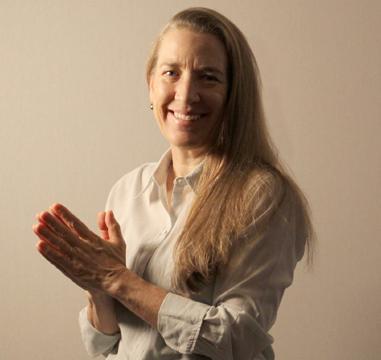
Anne Schopf, FAIA
Cornell University, Seattle, WA Jury of Fellows &
In her role as Director of Design at Mahlum Architects, Anne Schopf FAIA continually challenges teams to question deeply and listen intently to support the firm’s goal of creating healthy and sustainable spaces for their clients and the communities they serve.
Anne’s body of work, recognized with over 80 international, national, and local awards, has always sought to balance the influences of the built and natural environments. Her deep commitment to design quality and building performance has led her to serve at the AIA at the national level for both the Committee on the Environment (COTE) and the Committee on Design (COD).
Her early work with COD focused on bringing more gender and geographical diversity to the ranks of the Honorary Fellowship (HFAIA) program. With COTE, she drove performance metrics into AIA’s design awards programs by advocating for the development and adoption of the Common App, which sparked local AIA chapters and AIA Knowledge Communities to include performance metrics in their submission and jurying process. AIA National has now incorporated these metrics into all their programs, transforming the culture of design that examines ecological performance and social impact in addition to form and materiality.

Lourdes Solera, FAIA, NOMA, RID is a Principal at MCHarry & Associates, a third-generation owner of the 65 + year old architectural firm that specializes in public sector work. With 30+ years of professional practice, Lourdes' experience in both the private and public sector has given her a clear understanding of the intricate relationships and coordination needed to successfully deliver projects that fulfill the client’s needs and budget. Her firm focuses on public agency clients; and she focuses on educational projects as well as historic preservation & restoration.
Lourdes is highly regarded as an architect committed to both public service and advancing the cause of architecture. She has been a dedicated leader at the AIA for many years and was elevated to the AIA College of Fellows in 2012. She was the 2022 President of AIA Florida, the Miami State Director and Vice President for Communications and Professional Development. At AIA Miami, Lourdes was Chapter Director, Secretary/ Treasurer and Chapter President in 2004. She is cofounder of AIA Miami’s Women in Architecture Committee and founder of AIA Florida’s Women in Architecture Committee.
Lourdes holds a Bachelor of Architecture degree from Mississippi State University and a Master of Architectural History from the University of Virginia. She is a registered Architect and registered interior Designer in Florida and and a LEED Accredited Professional with the U.S. Green Building Council.

Fellowship is AIA’s highest membership honor. Architects who have made significant contributions to the profession and society and who exemplify architectural excellence can become a member of the College of Fellows. Only 3% of AIA members have this distinction.
ELIGIBILITY
Candidates for Fellowship must:
• Be an AIA architect member in good standing. This also applies to Architect Emeritus members.
• Have at least 10 cumulative years of architect membership prior to the submission deadline.
NOMINATION
Architect members may be nominated either by:
• The governing board of any chapter (state or local)
• A minimum of five (5) Fellows or ten (10) Architect members residing anywhere.
CRITERIA
The jury considers how candidates have shown distinction in the context of their object, in relation to AIA's values, and whether their work has had a ripple effect.
The "ripple effect"
Candidates are asked to demonstrate the "ripple effect" they
have had on the profession. This is shorthand for your impact beyond the day-to-day work of your practice or outside your community. Ripple effect could be demonstrated by speaking, publications, mentoring, service to the profession, geographic impact, or legacy through others.
FELLOWSHIP OBJECTS
The six objects of nomination are essentially the award categories candidates apply under, and each object has specific criteria and requirements associated with it.
AVAILABLE RESOURCES
Visit https://www.aia.org/design-excellence/awards/ fellowship for:
• More information
• Sample applications
• Previous examples of successful submissions
• Application deadlines
• You can verify your membership tenure with your local chapter or by emailing our Archivist at aiamembershiphistory@aia.org.
The 2025 Fellowship cycle is slated to open in June with submissions closing in October. More information will be available shortly on the website link noted above.
1 2 3 4 5 6 Fellowship Objects
Object One: To promote the aesthetic, scientific, and practical efficiency of the profession
Sub-objects: Design, Urban Design, Preservation
Fellowship in this object is granted to architects who have produced extensive bodies of distinguished work that has been broadly recognized for its design excellence through design, urban design, or preservation. This may be accomplished through individual or organizational effort. Works submitted may be of any size, for any client, of any scope, and reflecting any type of architectural design service.
Object Two: To advance the science and art of planning and building by advancing the standards of practice.
Sub-objects: Practice management, Practice Technical Advancement
Fellowship in this object is granted to architects who have made notable contributions through their work in the practice of architecture. Practice management includes firm management, administration, and project management. Practice technical advancement includes specific building types, and technical expertise. For example, practice technical advancement of preservation projects might be based on the architect’s strong commitment to historical research, implementation of unique preservation technique, and coupled with their strong focus on the actual construction implementation to enhance our physical heritage.
Object Three: To coordinate the building industry, and the profession of architecture.
Sub-objects: Led the Institute, Led a Related Organization
Fellowship in this object is granted to architects who have actively, efficiently, and cooperatively led the Institute or a related professional organization over a sustained period of time and have gained widespread recognition for the results of their work.
Object Four: To ensure the advancement of the living standards of people through their improved environment.
Sub-objects: Public service, Government, Industry Organizations
Fellowship in this object is granted to architects who have made notable contributions in public service or work in government or industry organizations through leadership in the development of civic improvements and needed governmental projects, including such elements as conservation, beautification, land-use regulation, transportation, or the removal of blighted areas, or who have clearly raised the standards of professional performance in these areas by advancing the administration of professional affairs in their fields.
Object Five: To make the profession of ever-increasing service to society.
Sub-objects: Alternative career, Service to Society, Volunteer work with organizations not directly connected with the built environment
Fellowship in this object is granted to architects who have made notable contributions to one of the following: an alternative career related to architecture that illustrates outstanding achievements that supports the architectural profession; extensive volunteer work with organizations not directly connected with the built environment; or service that transcends the customary architectural practice that have wide reaching impacts that serve as a national model.
Object Six: To advance the science and art of planning and building by advancing the standards of architectural education and training.
Sub-objects: Education, Research, Literature
Fellowship in this object is granted to architects who have made notable contributions through their work in education, research, or literature. Work in education may be teaching, research, administration, or writing and should have a lasting impact, be widely recognized, and provide inspiration to others in the field and the profession. Research areas may include building codes and standards, specifications, new material applications, or inventions.
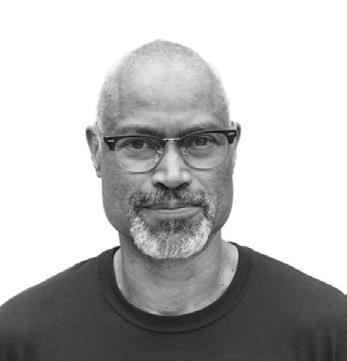
AIA New York State | AIA New York Chapter Object 2 | Practice (Technical Advancement)
Douglass Alligood turns great design ideas into great buildings. He leads the discovery of unique and refined technical solutions for large scale public projects nationwide and shares his passion and expertise with the next generation.

Jeffrey W. Allsbrook, FAIA
AIA California Council | AIA Los Angeles Object 1 | Design
Engaging material, context and purpose while practicing at the confluence of domestic and retail architecture, Jeffrey Allsbrook’s sensitivity to local environments, material quality, and culture manifests in modern, memorable design that inspires a worldwide audience.
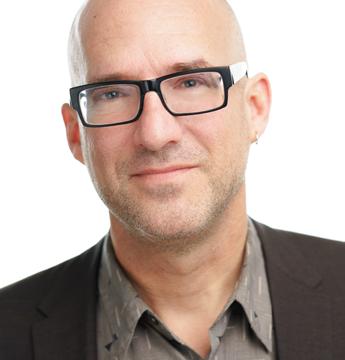
Eric Amel, FAIA
AIA Minnesota | AIA Minneapolis Object 2 | Practice (Technical Advancement)
Eric Amel demonstrates that design authorship is a collaborative pursuit. Eric’s design leadership on small and large projects ranges from initial conception through detailing, advancing the philosophy that architectural practice encompasses ideation, development, and execution.
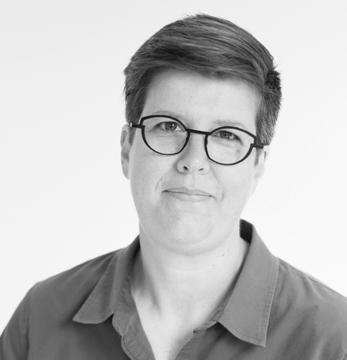
Michelle Amt, FAIA
AIA Virginia | AIA Central Virginia
Object 2 | Practice (Technical Advancement)
In her projects, practice, and advocacy, Michelle Amt unites design, sustainability and system-wide transformation to create a thriving future for all.

William Patrick Babbington, FAIA
AIA Colorado | AIA Denver
Object 2 | Practice (Technical Advancement)

Thomas R. Bassett-Dilley, FAIA
AIA Illinois | AIA Chicago Object 2 | Practice (Technical Advancement)
Through pioneering design, public engagement, and advocacy, Tom Bassett-Dilley has advanced sustainability in architecture. His proofof-concept decarbonization projects are examples for architects, owners, and policymakers working toward a clean energy built environment.
Will Babbington FAIA shares technologically-advanced strategies for architectural enclosures, enabling collaborators award-winning latitude in their design vision and advancing the Profession's insight into sustainability and energy efficiency.
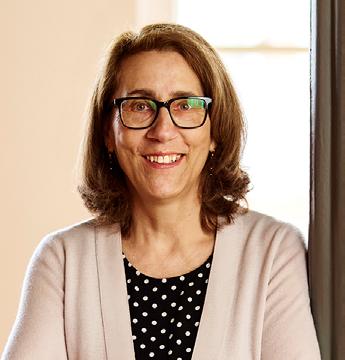
Nancy Beckner Bastian, FAIA
AIA Pennsylvania | AIA Philadelphia
Object 2 | Practice (Technical Advancement)
Nancy Bastian has devoted her career to affordable housing - for families, seniors, people with disabilities, and those in recovery - designing with compassion, leading in her community, and demonstrating the value of innovative, thoughtful, affordable architecture.
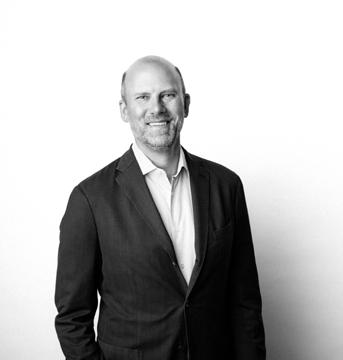
David A. Baley, FAIA
AIA Tennessee | AIA Middle Tennessee Object 1 | Design
David Bailey has dedicated his career to crafting architecture that integrates conceptually driven design, innovative environmental strategies, and contextual relevance that seeks a greater purpose in order to foster genuine connections amongst communities.
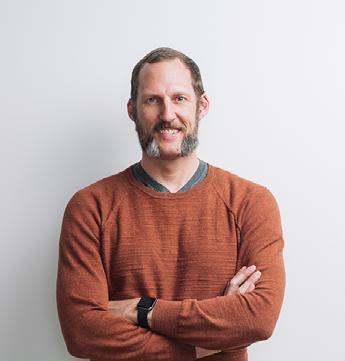
Samuel P. Batchelor FAIA
AIA Masachusetts | Boston Society of Architects Object 1 | Design
Sam Batchelor’s diverse portfolio of exceptional architecture expresses a deep commitment to social and environmental responsibility. It embodies his philosophy of Critical Stewardship, which optimizes design toward positive impact on communities and the natural world.
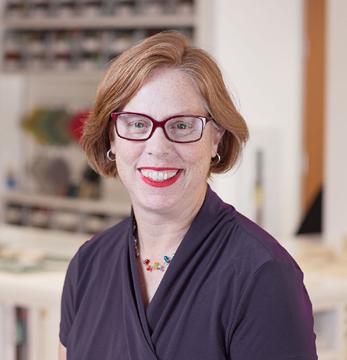
AIA California Council | AIA San Francisco
Object 3 | Led the Institute
Jill Bergman has built a career in service to advancing and elevating healthcare architecture and architects. Through sustained leadership in professional organizations locally and nationally, Jill inspires generations with advocacy, mentorship, and knowledge sharing.

AIA New York State | AIA New York Chapter Object 4 | Public Service
Gina Bocra is a pioneer in building sustainability at the local, regional and national level, making significant contributions through elevating codes, advising industry organizations, educating peers, and advancing building performance standards to combat climate change.
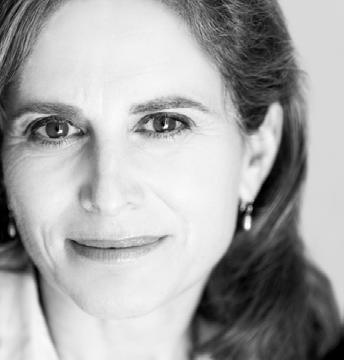
AIA California Council | AIA San Francisco
Object 1 | Design
Cary Bernstein's transformative architecture connects people, place, and time with expressive economy, rigorous detail, and the essential presence of nature. As architect, advocate, and educator she elevates the profession with ardent personal agency and intention.
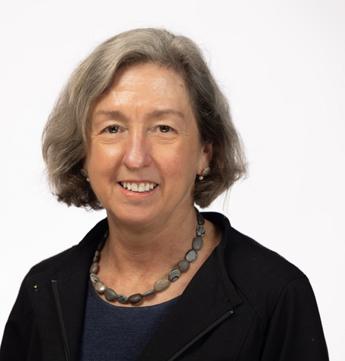
AIA Washington Council | AIA Seattle Object 6 | Education
Through teaching, scholarship, academic administration, and service, Ann Marie Borys orients students towards ethical practice by integrating history, theory, design, and professional values within a pedagogy of social engagement, action research, and critical inquiry.

Lily del C. Berrios, FAIA
AIA Georgia | AIA Atlanta Object 2 | Practice (Technical Advancement)
Lily Berrios’ pioneering master planning process integrates funding, construction strategies and architecture. She enables the work of firms nationally, as she speaks to, mentors and advances an expanded role for architects in institutional capital planning.

AIA California Council | AIA Los Angeles Object 2 | Practice (Technical Advancement)
A catalyst for innovation, Anthony Brower generates research-driven climate design paradigms that cross building typologies and scales as he educates and motivates the profession to strive for higher levels of environmental consciousness and responsibility.

Abigail R. Brown, FAIA
AIA Washington D.C.
Object 3 | Led the Institute
Abigail R. Brown propels the profession toward a robust, prosperous, and more equitable future. Her dynamic and transformative AIA leadership advances innovations in practice and forges avenues for emerging voices to drive the Institute forward.
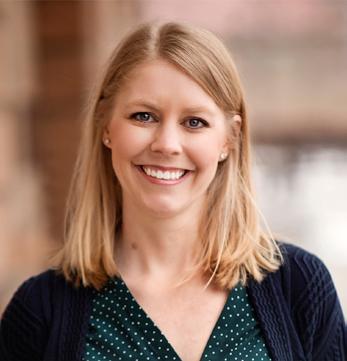
Christensen, FAIA
AIA Montana
Object 3 | Led a Related Organization
Shannon Christensen supports future and emerging architects by ensuring that licensure, AIA engagement, and education opportunities are accessible, relevant, and equitable, recognizing each individual’s unique experience and continually examining and improving the profession’s essential structures.
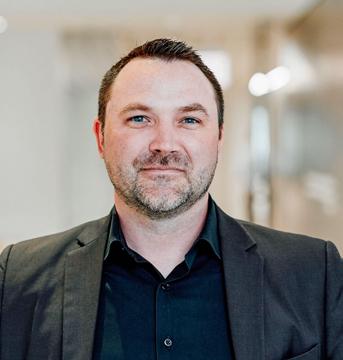
Nicholas W. Cameron, FAIA
AIA Illinois | AIA Chicago
Object 2 | Practice (Technical Advancement)
Nick Cameron, a trailblazer, develops impactful digital strategies and software. His innovative processes yield healthy and impactful design solutions, benefiting communities worldwide. A global collaborator, he drives the digital transformation of the profession.
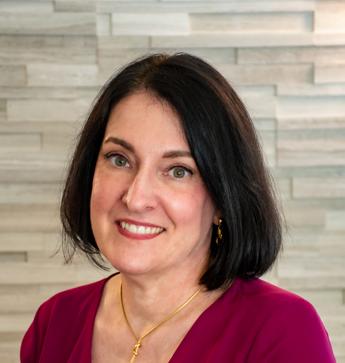
Ida A. Clair, FAIA
AIA California Council | AIA Central Valley Object 4 | Government
As California's first woman State Architect, Ida A. Clair, FAIA, has leveraged her authority to enhance sustainability, accessibility, and equity in the state, strengthening California's influence in a challenged world.
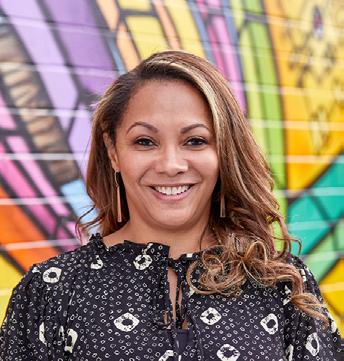
Teri S. Canada, FAIA
AIA North Carolina | AIA Triangle Object 2 | Practice (Management)
Teri Canada advances the architectural profession by advocating for women, people of color, and disenfranchised communities in architectural practice. She has built a design practice that elevates and celebrates under-served populations through purposeful, awardwinning design.
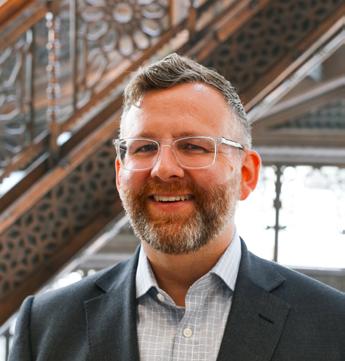
Drew Deering, FAIA
AIA Illinois | AIA Chicago Object 3 | Led the Institute
Drew Deering is a catalytic AIA leader. His prolific career in leadership has paved the way for national, regional, and local milestones and his passion for advocacy and diversity shines on the communities he serves.

Colin L. Drake, FAIA
AIA Kentucky | AIA Central Kentucky Object 1 | Design
Colin Drake amplifies civic engagement through design. His immersive, contextual solutions nurture discovery, enhance collaboration, and connect people to enriching landscapes. His value driven solutions reimagine off the shelf materials and conventional assemblies.

Edward R. Ford, FAIA
AIA Virginia| AIA Central Virginia Object 6 | Literature
Through books, articles and teaching he has explored how design informs construction and how construction informs design as evidenced by the use of his texts on detailing in schools and offices throughout the world.
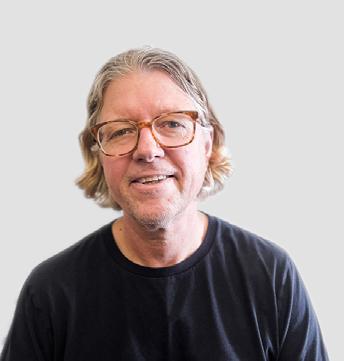
Todd A. Erlandson, FAIA
AIA California Council | AIA Los Angeles Object 5 | Service to Society
Todd Erlandson empowers nonprofit and community-based clients to improve people’s everyday lives through authentic, purpose-oriented architecture. He openly shares his mission-focused model for architects by teaching a new generation of talent about servicecentered design.
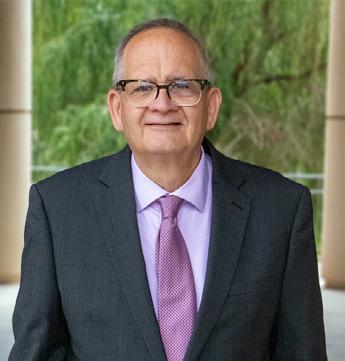
Ronald H. Frantz, Jr., FAIA
AIA Oklahoma | AIA Central Oklahoma Object 4 | Public Service
Ronald Frantz dedicates his career to revitalizing our historic communities. By equipping citizens with preservation training and tools, guiding design in preservation, and inspiring students in placemaking, he protects these architectural treasures for future generations.
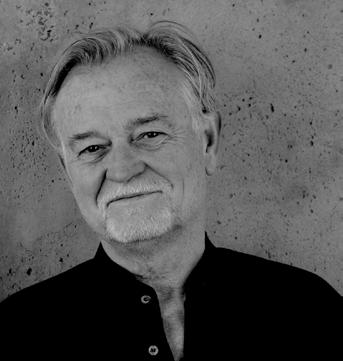
Greg Faulkner, FAIA
AIA California Council | AIA San Francisco Object 1 | Design
Greg Faulkner creates highly crafted, haptic built environments in intimate conversation with their surroundings, appropriate to site, climate, and culture. His work’s intellectual rigor fosters a responsible, experiential relationship between habitation and nature.
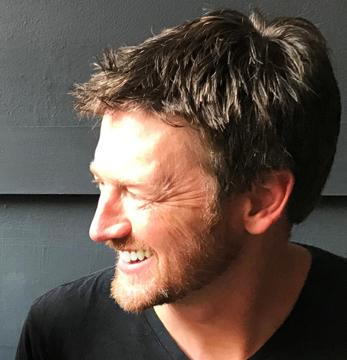
Matthew Henning Griffith, FAIA
AIA North Carolina | AIA Triangle Object 1 | Design
Matthew Griffith exemplifies design’s ability to shape places and everyday experiences through site-specific, beautifully detailed architecture. He shares this capacity with young designers through mentorship and education and provokes design engagement within his community.

Michael L. Guthrie, FAIA
AIA Michigan | AIA Detroit
Object 1 | Design
Michael Guthrie’s design impact on cities and cultures uplifts the human spirit, inspires new methodologies of practice and galvanizes identity of place with global recognizability. His designs reflect a genuine interpretation of context and community.
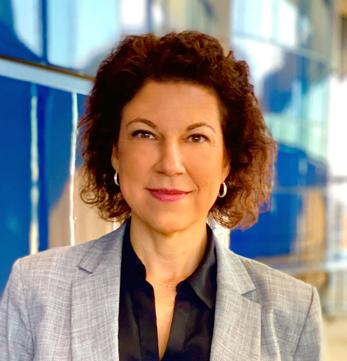
AIA New York State | AIA New York Chapter Object 2 | Practice (Technical Advancement)
Combining an architect's sensibility with superior engineering proficiency, Erleen Hatfield pushes design beyond expected limits. By applying pioneering technologies, devising technically complex structural solutions, and incorporating sustainable systems, she brings ambitious projects to life.
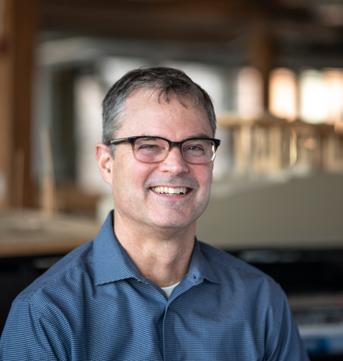
AIA Washington Council | AIA Seattle Object 2 | Practice (Technical Advancement)
Leading the sustainable design process for the country’s most influential projects, Jim Hanford actualizes Miller Hull’s ethos, standardizing high-performance within its practice, and awakening the architectural community to a new standard of building.
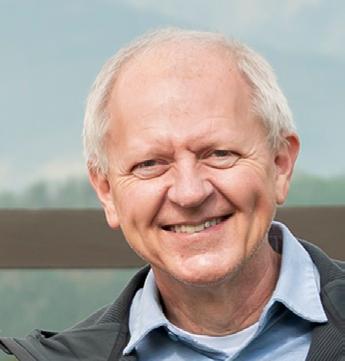
AIA Indiana | AIA Indianapolis
Object 4 | Public Service
For over 15 years, John Hawkins’ national code experience, steadfast determination, and public advocacy led to revolutionizing Indiana’s building codes with increased resilient design, equity, inclusion, and ensured life safety protection for millions of residents.

Thomas RC Hartman, FAIA
AIA Massachusetts | AIA Western Massachusetts Object 3 | Led the Institute
Tom Hartman leads through environmentally intelligent building design; through candidly sharing technical sustainability information; through financial and environmental leadership in AIA and governmental organizations; and by developing new methodologies and systems to advance carbon literacy.
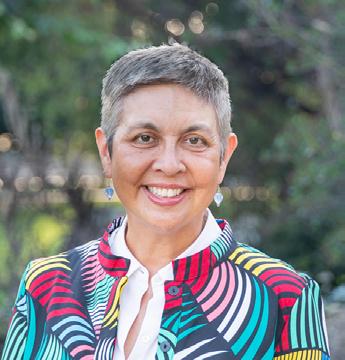
Julia E. Hawkinson, FAIA
AIA California Council | AIA Los Angeles Object 4 | Government
Julia Hawkinson’s work transforms the learning environments for the students of the nation’s second largest public school district. Every day, she guides architects, planners, and those around her to think of students first.
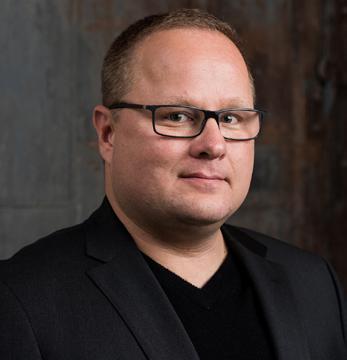
David F. Herron, FAIA
AIA Missouri | AIA Kansas City Object 2 | Practice (Technical Advancement)
David Herron is a champion for high performance design. Through education, advocacy, and code development he has advanced sustainable, energy efficient building design. In practice, he has created performance driven architecture that embodies design excellence.

Robert L. Holzbach, FAIA
AIA Washington D.C. Object 2 | Practice (Management)
Robert Holzbach transforms the future of architectural practice by shaping next-generation talent while driving and empowering design excellence. He fosters a diverse, equitable, and inclusive culture, and actively shares his knowledge across the profession.
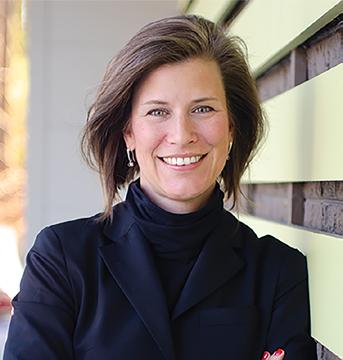
AIA
Kristen M. Hess empowers women and girls, as she creates opportunities for their growth and leadership. With a career focused on designing to serve, she elevates professionals globally as leaders in policy, business, and design.

AIA California Council | AIA San Francisco Object 1 | Design
Taesun Hong’s distinguished oeuvre employs an abstract aesthetic, spanning scales and typologies and resonant with musical themes. He seeks to create timeless places that enhance community identity and cultural awareness through simple yet contextual designs.
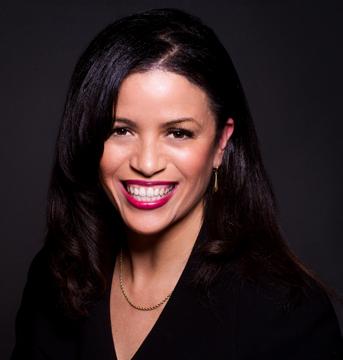
Nicole A. Hollant-Denis, FAIA
AIA New York State | AIA New York Chapter Object 2 | Practice (Management)
In response to historical inequities, Nicole Hollant-Denis intentionally manages an inclusive practice, nurturing and affirming the cultural identities of her staff, while inspiring them with the knowledge to develop projects that benefit their communities.
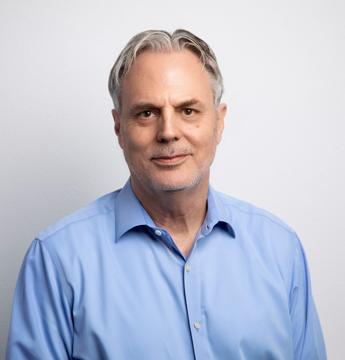
AIA Florida | AIA Florisa Gulf Coast Object 2 | Practice (Technical Advancement)
A pioneer in technology integration for the architectural design process, Gary Hoyt’s studio and visual research lab transforms the way designers, communities, and developers use technology for visual decision making.

Jeanne E. Huntsman, FAIA
AIA North Carolina | AIA Charlotte
Object 4 | Public Service
Jeanne Huntsman empowers architects & building stakeholders to make informed energy design decisions through utility incentive programs, project-specific analytics, and knowledge sharing. Her leadership in building-focused climate action accelerates our society's progress toward decarbonization.
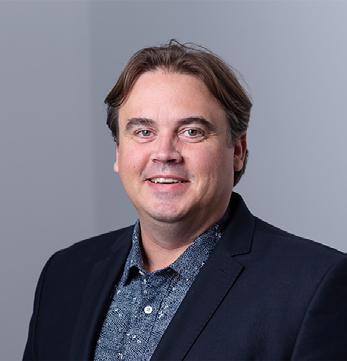
Jason J. Jewhurst, FAIA
AIA Massachusetts | Boston Society of Architects Object 2 | Practice (Technical Advancement)
Jason Jewhurst, FAIA, practices boundary-pushing sustainable architecture. By pioneering cutting-edge building technologies, he is advancing the profession toward a future in which regenerative design and net-positive building performance are the norm.
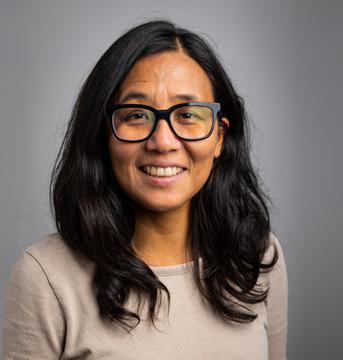
AIA New York State | AIA Buffalo/Western New York Object 6 | Education
Joyce Hwang is a pioneering researcher in advancing multispecies design in architecture. Her focus on ecological practices and climate justice contributes to innovating design education, and advocating for equity and empowerment in the built environment.
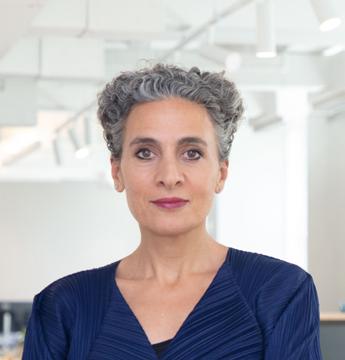
Hana Kassem, FAIA
AIA New York State | AIA New York Chapter Object 1 | Design
Hana Kassem’s architecture uplifts the human experience, uniting inclusivity and sustainability, to inspire common bonds. She skillfully modulates form, color, and materials to foster a profound sense of belonging to place, community, and nature.

Douglas J. Ito, FAIA
AIA Washington Council | AIA Seattle Whitney M. Young Jr. Recipient
Douglas tackles the affordable housing crisis through his career and advocacy, designing quality housing for all, supporting equitable access, serving on nonprofit housing boards, and uplifting marginalized voices, to exhibit collective action can create change.

Jeffrey A. Kenoff, FAIA
AIA New York State | AIA New York Chapter Object 1 | Design
Through his work, lecturing, and academic involvement, Jeff Kenoff is transforming urban architecture through projects that redefine connectivity and public space with purposeful articulation of scale, materiality, and humanization from the ground to the sky.

AIA California Council | AIA San Francisco
Object 1 | Design
Hao Ko advances benchmarks for highperformance buildings with innovation, craft, and resilience. He challenges the possibilities, pushing the boundaries of design to create beautiful and iconic places that impact people and planet for the better.

AIA New York State | AIA New York Chapter Object 2 | Practice (Technical Advancement)
Sameer is a recognized expert of building enclosure design. Through the breadth of his practice and teaching focused on building performance and material innovation, he has profoundly influenced the profession of architecture.

AIA Pennsylvania | AIA Philadelphia
Object 2 | Practice (Technical Advancement)
By advancing computation, novel research, and alternative project delivery models, Matthew Krissel FAIA expands the potential of design, elevates the creative process, and propels the effectiveness of collaboration, creating exceptional architecture and the built environment.
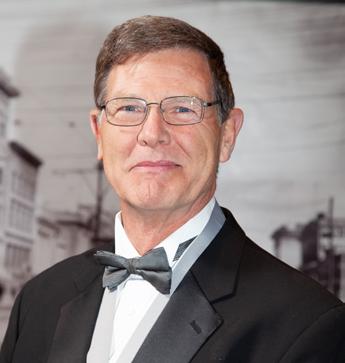
AIA Oregon | AIA Portland
Object 3 | Led the Institute
John Lape has been vital in the evolution of AIA's Continuing Education System from its inception to today: through constant leadership an advocacy, he's achieved transformational changes that advance the profession and architects' life-long learning.
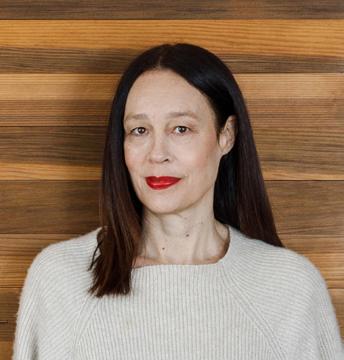
AIA California Council | AIA Los Angeles Object 1 | Design
Silvia Kuhle employs context and light to elevate our experience of space. Her designs become land art, evoking calm, connecting us to nature and inspiring future talent and clients to advance simple, ecological architecture.
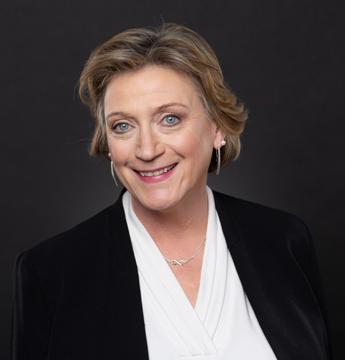
AIA California Council | AIA San Francisco Object 4 | Government
Julia Laue fosters a culture of excellence in civic architecture. Through pioneering delivery methods, she assembles design teams that produce inspiring, awardwinning projects, transforming the way citizens experience government services that benefit the community.
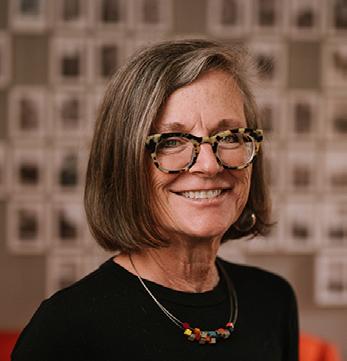
Kathleen M. Lechleiter, FAIA
AIA Maryland | AIA Baltimore
Object 2 | Practice (Management)
Kathleen Lechleiter’s practice model eradicates housing insecurity and instability for underserved people. By combining design, teaching and public engagement, she enacts solutions to homelessness, advances fair housing development, promotes sustainability, and builds healthy, equitable communities.

AIA Arizona | AIA Southern Arizona
Object 3 | Led a Related Organization
Throughout his career, Ed Marley has advocated for broadening accessible pathways to architectural licensure, leadership, and education with the goal of creating a more inclusive, equitable, and diverse profession.
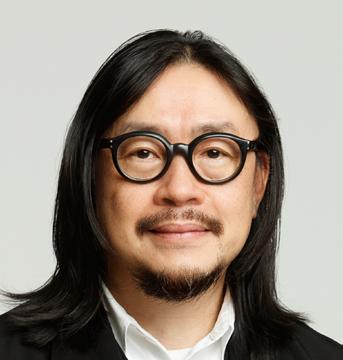
AIA International
Object 1 | Design
Simple geometry, light and shadow, proportion and tectonics all inform Anderson Lee's architecture. Beyond merely buildings, his architecture reveals relationships, trust, confidence, hopes - and culminates in the knowledge that is necessary to build progressive communities.

AIA Washington D.C.
Object 2 | Practice (Technical Advancement)
Leora Mirvish pioneers universal design as a catalyst for transforming landmark public buildings. Weaving innovative technical solutions into these challenging buildings, Leora creates inclusive, integrated, and graceful renovations that enrich the experience for international audiences.
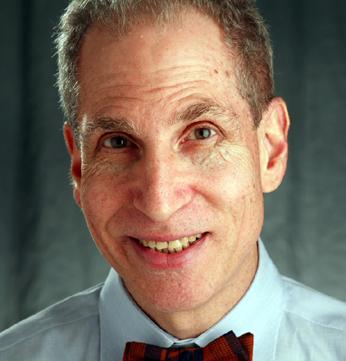
AIA California Council | AIA San Diego
Object 6 | Research
Researcher/educator/architect, through his pioneering leadership, Frederick Marks has championed a fresh way of translating, sharing, and applying scientific research that advances design knowledge for improving building occupancy health and our collective environmental stewardship.
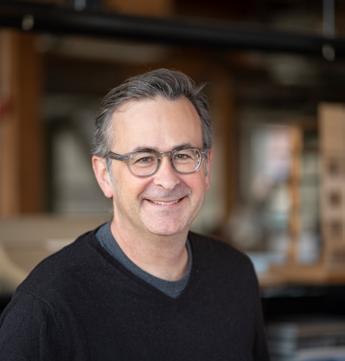
AIA Washington Council | AIA Seattle Object 2 | Practice (Management)
Rob Misel’s approach to firm and project leadership creates an environment of inclusivity, transparency and accountability. His commitment prioritizes equity with sustainable design excellence, fostering necessary diversity and engagement within projects, communities, and the profession.
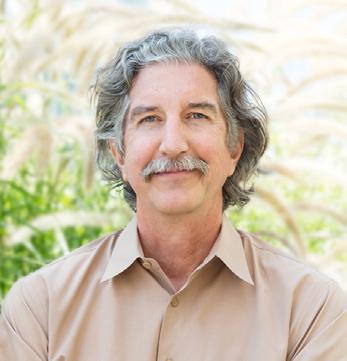
Paul A. Murdoch, FAIA
AIA California Council | AIA Los Angeles
Object 1 | Design
Paul Murdoch is an architect of healing who designs public sanctuaries of memory that restore emotional health, community centers that foster social well-being, and regenerative environments that promote resilience and climate justice.

AIA Texas Society of Architects | AIA Dallas
Object 2 | Practice (Management)
Irene transforms educational architecture design through leadership in evidence-based designs, elevating the importance of architecture in enhancing students’ experiences and positively impacting their communities.
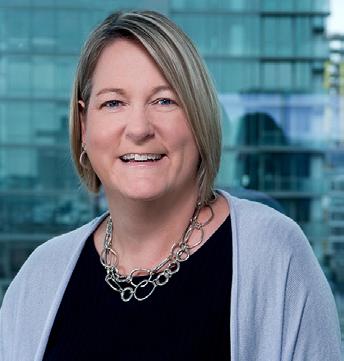
Tara L. Myers, FAIA
AIA Tennessee | AIA Middle Tennessee
Object 5 | Service to Society
Tara Myers exemplifies the diverse roles architects play in shaping the world. Harnessing the power of collective impact, her servant leadership advances and educates the AEC industry, while championing a collaborative, equitable, and healthy society.
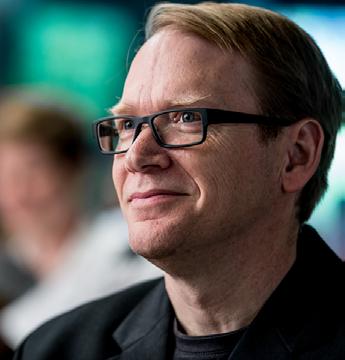
Kevin R. Nordmeyer, FAIA
AIA Iowa
Object 1 | Design
Kevin R. Nordmeyer is a pioneer in sustainable design – leveraging design excellence and an empathetic design process to create work that inspires change and enhances the human condition.

Carey R. Nagle, FAIA
AIA Iowa
Object 2 | Practice (Management)
Carey Nagle significantly impacts the architectural profession. A consummate architect who advocates for the values of the AIA to positively shape communities, Carey continually sets benchmarks for design excellence through highperformance innovation, mentorship, and policy.

AIA California Council | AIA San Francisco Object 2 | Practice (Technical Advancement)
Francesca Razzano Oliveira, FAIA advances technical design through research and realization of architecture that achieves decarbonization holistically with integrated systems and materials, and she broadly disseminates these resilient processes with peers and emerging professionals.
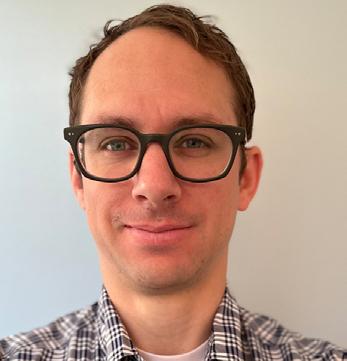
Jeffrey Pastva, FAIA
AIA Pennsylvania | AIA Philadelphia
Object 3 | Led the Institute
By amplifying the voice of members, advancing the influence of architects, and addressing the needs of communities, Jeffrey Pastva makes architects more visible to the profession and more accessible to the public.
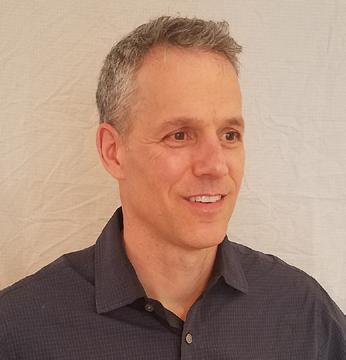
Jeffrey D. Peterson, FAIA
AIA Massachusetts | Boston Society of Architects
Object 2 | Practice (Technical Advancement)
Jeff Peterson sets the standard in advancing the art and science of architecture for the sport of rowing. His compelling buildings prioritize structure, views, and light; solve specific, complex program requirements; and support community engagement.
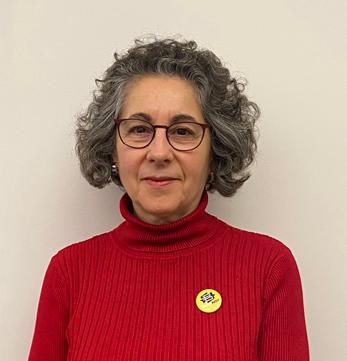
Ludmilla D. Pavlova-Gillham, FAIA
AIA Massachusetts | AIA Western Massachusetts Object 4 | Industry Organizations
Ludmilla Pavlova-Gillham embodies service, tenacity, and teamwork. She challenges institutions to embrace stewardship responsibilities for their architectural heritage and to build a sustainable future by creating a culture of integrative planning, design excellence and learning.

AIA Washington D.C. Object 1 | Preservation
Gretchen Pfaehler seamlessly harmonizes historic structures with modern functionality. Her innovative preservation design and advocacy broaden the awareness and application of interventions to heighten contemporary possibilities and extend the relevancy of cultural heritage.

AIA Illinois | AIA Chicago Object 1 | Design
Maria Pellot designs for change. As an Architect and Planner committed to equity through thoughtful civic interventions across scale and typology, she crafts design solutions within context and culture to elevate shared community experiences.
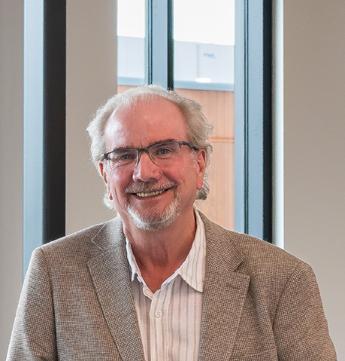
John G. Pfluger, FAIA
AIA Minnesota | AIA Minneapolis Object 1 | Design
John Pfluger designs extraordinary spaces that inspire educators to reimagine how they serve communities. He is renowned for pioneering a cocreative process that invites community stakeholders to join clients in the design of learning environments.

Michael T. Pinto, FAIA
AIA California Council | AIA Los Angeles Object 2 | Practice (Management)
Michael Pinto integrates contemporary design practice with social activism. His mission-driven model of practice expands the leadership role of architects and architecture in a broader civic discourse.
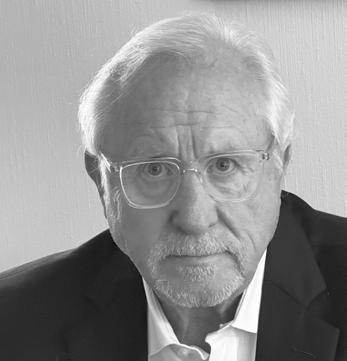
Ripley A. Rasmus, FAIA
AIA Missouri | AIA St. Louis Object 1 | Design
Ripley Rasmus works at the intersection of community, place and contemporary technology. He creates memorable places and high performance buildings that resonate locally and contribute globally, advancing our common art and common global future.
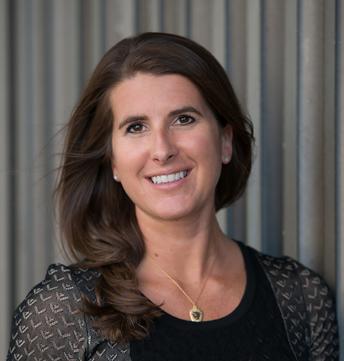
Mel Price, FAIA
AIA Virginia | AIA Hampton Roads Object 2 | Practice (Management)
Mel Price is changing the profession with a business model based on transparency and resilience. Success is measured by social consciousness, economic success, and coastal resilience, the design parti of a healthy firm and community.
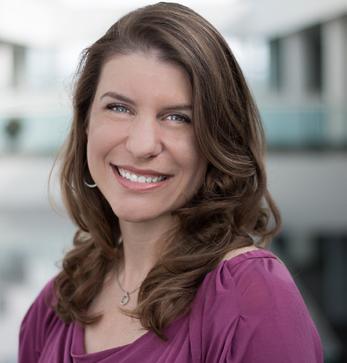
Laura Flannery Sachtleben, FAIA
AIA Texas Society of Architects | AIA Houston Object 2 | Practice (Technical Advancement)
Laura Flannery Sachtleben leverages her expertise in education design to address the complex challenges facing public schools and their communities by championing innovative holistic solutions and by integrating social advocacy into practice and empowering others.

Anath Ranon, FAIA
AIA Maryland | AIA Baltimore Object 2 | Practice (Technical Advancement)
Working at the intersection of old and new, Anath Ranon’s preservation practice enriches design for historic resources by safeguarding and rejuvenating architectural landmarks, reviving neglected community building stock and empowering others to follow her lead.

AIA California Council | AIA San Diego Object 1 | Design
With a profound capacity to capture the essence of a site and a project’s unique use, Taal’s designs fuse nature and structure with the goal of cultivating community and enriching people’s lives.

Mark J. Sanderson, FAIA
AIA Pennsylvania | AIA Philadelphia Object 1 | Design
Mark Sanderson creates meaningful places that make the world more engaging, interconnected, and worthy of care. His work explores architecture’s capacity to amplify the senses through the novel integration of material, craft, and technological innovation.
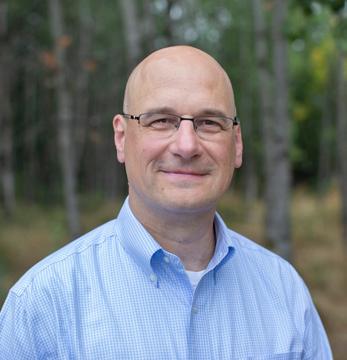
John A. Shoesmith, FAIA
AIA Washington Council | AIA Seattle Object 2 | Practice (Technical Advancement)
John Shoesmith elevates the standard in design for aging and memory care environments. His award-winning design, knowledge sharing, advocacy, and influence in regulatory change improves lives and inspires others in the profession.
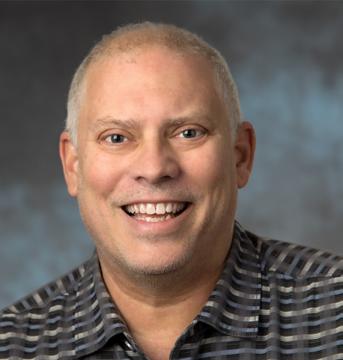
Todd J. Scott, FAIA
AIA Washingtonn Council | AIA Seattle Object 4 | Public Service
By leveraging historic resources and community engagement for revitalization, leading preservation organizations, and educating others, J. Todd Scott has empowered diverse communities to revitalize their architectural and cultural heritage for the benefit of future generations.
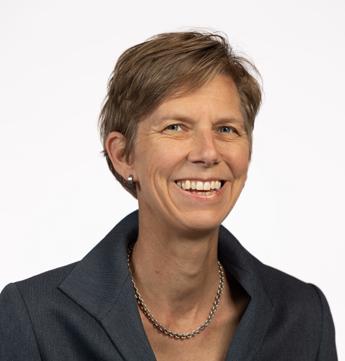
AIA Washingtonn Council | AIA Seattle Object 6 | Research
Carbon activist Kate Simonen has crystallized the embodied carbon movement with cutting-edge research, incubation of new approaches and crosssector collaboration, equipping architects with the data, policies and social infrastructure to successfully harness carbon-smart material solutions.

Catherine Seavitt Nordenson, FAIA
AIA New York State | AIA New York Chapter Object 6 | Research
Through groundbreaking publications, design research, and scholarship, Catherine Seavitt Nordenson has transformed the integral relationship of architecture, landscape architecture, and green infrastructure to advance climate adaptation, with a focus on the equitable public realm.

Sanford L. Smith, FAIA
AIA California Council | AIA Orange County Object 5 | Alternative Career
Sanford Smith, FAIA, devoted his career to creating and promoting sustainable developments changing conventional thinking on scale and affordability. His leadership demonstrated the value proposition for higher performing projects, transforming corporate America’s approach to building.
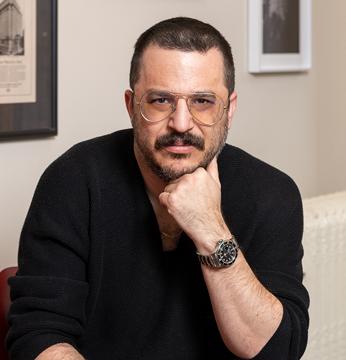
Jonathan D. Solomon, FAIA
AIA Illinois | AIA Chicago
Object 6 | Education
Committed to the past, present, and future of the built environment, Jonathan Solomon, FAIA, advances the profession of architecture as an educator, curator, and preservationist to support the next generation to thrive in their careers.
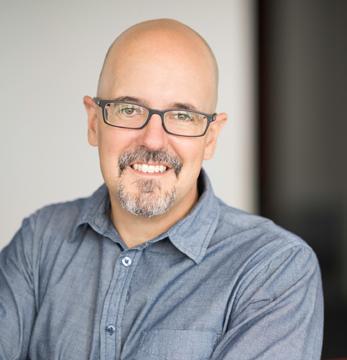
Kent W. Suhrbier, FAIA
AIA Pennsylvania | AIA Pittsburgh
Object 1 | Design
Kent Suhrbier's work demonstrates how architecture can best serve diverse communities, crafting distinctly natural places that advance hybrid building typologies with new patterns for living, learning, and gathering.
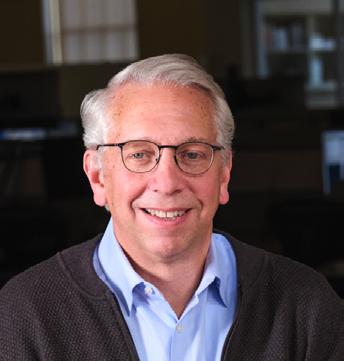
Craig S. Spangler, FAIA
AIA Pennsylvania | AIA Philadelphia
Object 1 | Design
Craig Spangler’s designs of academic environments have transformed the architecture of science to inspire groundbreaking learning and discovery. These aspirational places resonate with rigor, craft, and dedication to sustaining the environment and enduring campusmaking.

Ann Thompson, FAIA
AIA Illinois | AIA Chicago
Object 5 | Alternative Career
A unique advocate architect and real estate leader, Ann Thompson paves new pathways for design excellence by pioneering an integrated building model and trailblazing for diversity and equity, resulting in more inclusive, connected urban communities.

Edward Steinfeld, FAIA
AIA New York State | AIA Buffalo/Western New York
Object 6 | Research
As a researcher, educator and thought leader, Edward Steinfeld has worked at the intersection of design, science, and policy, to improve the quality of life for millions of Americans.

AIA Maine
Object 1 | Design
Jesse Thompson designs for ecology, change, and equity. Through industry leadership, individual mentorship, and high-performance architecture expertise, he inspires others to rise to the challenge of creating spaces that are Beautiful, Sustainable, and Attainable.
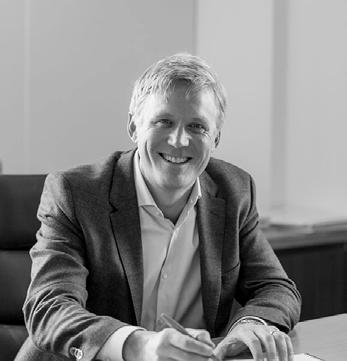
A. James Tinson, FAIA
AIA New York State | AIA New York Chapter Object 2 | Practice (Management)
Jim Tinson drives innovative thinking and design by leading diverse, interdisciplinary teams that elevate the architect as an integral strategic partner in creating transformative environments worldwide.

Moses Vaughan, FAIA
AIA California Council | AIA San Francisco Object 2 | Practice (Technical Advancement)
Moses Vaughan conducts focused tectonic research to clarify and elevate architectural intent. Collaborating with creative trade partners, he explores latent opportunities of technology and materials to deliver highest levels of design expression and user satisfaction.

Amanda H. Tullos, FAIA
AIA Texas Society of Architects | AIA Houston Object 2 | Practice (Technical Advancement)
Amanda Tullos has embedded holistic sustainable practices into wide segments of her community, reaching beyond current thinking to engage leaders and the public in a regenerative approach to all aspects of everyday life.
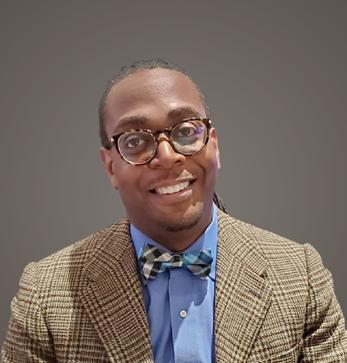
Roderic K. Walton, FAIA
AIA Illinois | AIA Chicago Object 5 | Service to Society
Relentlessly advocating for the marginalized, Roderic Walton evolves the practice of architecture by leading stakeholders to truthfully reckon with history to advance healthcare equity and catalyze next-generation architects.

Mark W. Vaughan, FAIA
AIA Texas Society of Architects | AIA Dallas Object 2 | Practice (Technical Advancement)
Mark Vaughan, national champion for empathetic architecture, sensitively innovates complex health environments for life’s most vulnerable patients, elevates the standard by which healthcare architects are credentialed, and inspires young professionals through intensely personal mentorship.

Bruce R. Wardell, FAIA
AIA Virginia | AIA Central Virginia Object 5 | Service to Society
Bruce Wardell changes what people expect from architects by reversing historical power relationships in underserved communities; challenging architects to turn civic values into action; and amplifying the impact of nonprofits and ministries through design.

AIA Tennessee | AIA Chattanooga
Object 3 | Led the Institute
Committed to the good of the public realm and the profession of architecture, Trey Wheeler has led the Institute through persistent advocacy, shaping policy and statute, and teaching others to work effectively to create change.

Josep Miàs, Hon. FAIA
Spain
Object 1 | Design
Josep Miàs’ architecture is experimental and immersive. Inspired by curiosity and physical forms, his designs blend creativity and functionality. This prompts the users to question and experience the spaces around them, creating a lasting impact.
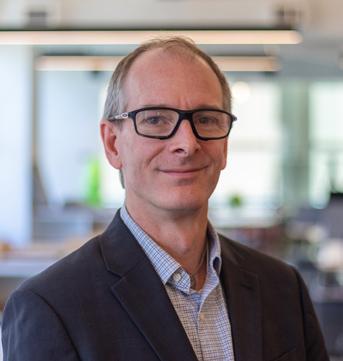
AIA New York State | AIA New York Chapter
Object 2 | Practice (Technical Advancement)
John Woelfling advances the design of sustainable affordable housing with innovations resulting in healthy, low carbon buildings that reinforce communities. His leadership in largescale affordable housing sets a national model for addressing the housing crisis.
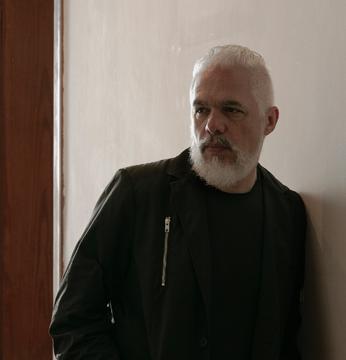
Héctor Esrawe, Hon. FAIA
Mexico
Object 1 | Design
Héctor Esrawe explores the realms of creative innovation, disruptive design, and experimentation through multidisciplinary collaboration. He adeptly translates his cultural heritage into new languages, creating integral solutions that stand out for their expression and character.

Paul S. Woolford, FAIA
AIA California Council | AIA San Francisco
Object 1 | Design
With a passion for cultivating humannature connections, Paul Woolford transforms complex design challenges into clear, sustainable solutions that promote environmental stewardship, human health, and community wellbeing on a global scale.
218
Candidates
151 1st Year Submission
Candidates
52 2nd Year Submission Candidates
15 3rd Year Submission Candidates
Choose your sponsor wisely; they should be someone who knows you and that will provide helpful review of your portfolio, it is also helpful if they have been through the process recently and are familiar with the portfolio structure.
Take advantage of the resources at AIA.org including the sample application, guidance powerpoint, and best of examples.
Key takeaways include:
• Use the 40 page limit to its full advantage; organize it clearly, follow the recommended structure, cross reference key honors and awards to significant work and provide introductory comments for unique items that jurors may not be familiar with.
• Avoid images that don’t illustrate or enhance the portfolio information. The best of examples provide guidance for organization, use of images and clarity in general and illustrate successful presentations unique to each object as well.
Take advantage of other resources in your network, your sponsor should not be your only advisor. Your state component, the COF regional representative network, and the Knowledge Communities you are connected to all contain
mentorship resources to consider in addition to your local chapter and colleagues. If you have questions that cannot be answered by the materials on the website or feel other elevated portfolios would be beneficial, contact the Honors and Awards staff; they can provide you with a copy of any digitally submitted portfolio that was elevated.
Focus your story through the lens of the object and sub-object you select. Review the object and sub-object descriptions in the sample application thoroughly. Present accomplishments that are directly object related first and prioritize the object related view. Every candidate ready to submit for fellowship has a diverse range of accomplishments; presenting these without focus weakens the story and your case for elevation. That said, presentation of all significant accomplishments in context can be helpful if organized well.
Do not be discouraged if you are not elevated the first year you submit. Submitting for Fellowship is more like a marathon than a sprint; many candidates are elevated in the second or third year after response to the portfolio comments provided by staff.

